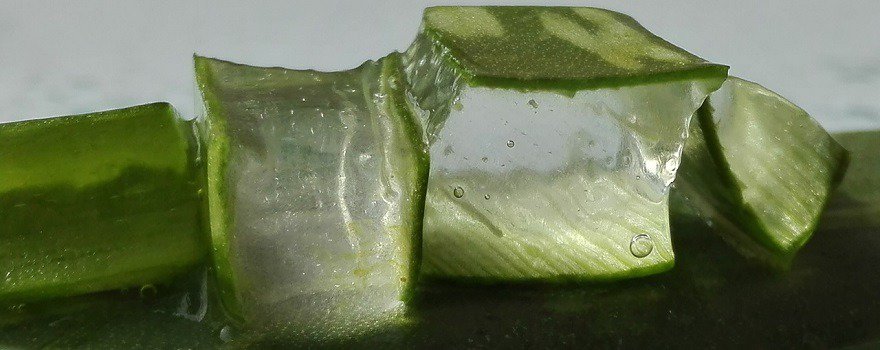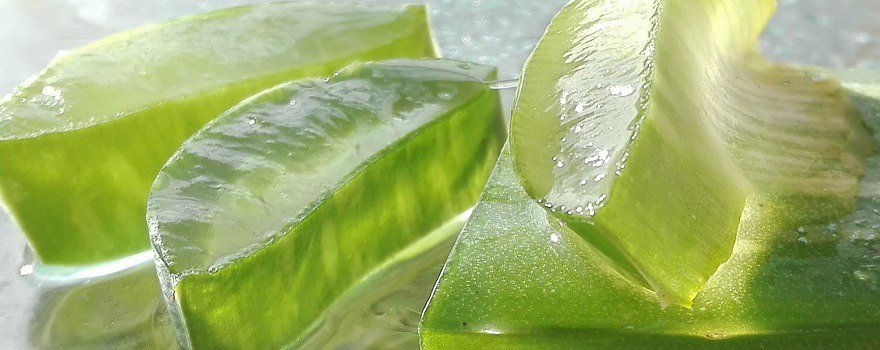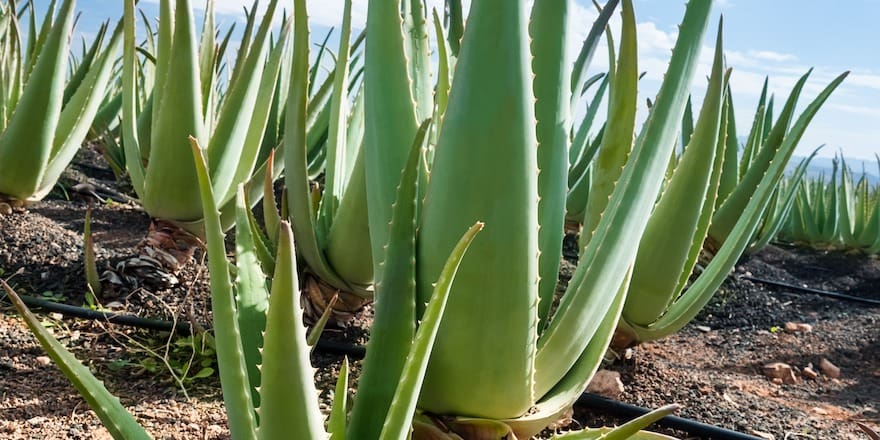The benefits of organic aloe vera
Aloe vera, a traditional natural remedy
The origin of aloe vera is uncertain, but the plant was already used in ancient Egypt as a medicinal plant. It is now cultivated in many parts of the world, mainly in tropical areas as it is sensitive to frost. As it was introduced to different regions of the world, traditional healers incorporated this plant into their pharmacopeia: it has been part of Ayurvedic medicine and traditional Chinese medicine since the 10th century, and in traditional Native American medicine since the 17th century.

Aloe vera (also known as Barbados aloe) has multiple uses: it is sold as an ornamental plant because it is relatively easy to grow indoors. In France, it can be cultivated in the Mediterranean regions and in Corsica, and of course also in the overseas departments and territories. It is widely used in cosmetics; it is a good natural remedy for certain skin conditions and can be used as a food.
Organic aloe vera: an ally for skin hydration
In cosmetics, what is used is the aloe vera gel from the pulp inside the leaves. Being a succulent plant, aloe vera retains water in this “gel,” which is renowned for its hydrating properties. Aloe vera gel is used to hydrate the skin without making it greasy. It can be used on oily and acne-prone skin, as it tightens the skin’s pores and regulates sebum.
Aloe vera is rich in antioxidants, which help combat cell aging. Organic aloe vera gel is thus a very good natural anti-wrinkle agent. Aloe vera gel can be used daily as a makeup remover base along with floral water for all skin types.
Organic aloe vera gel can be purchased pure or blended with other active ingredients. It can also be extracted personally from fresh aloe vera branches.
Organic aloe vera, a good natural remedy
Aloe vera leaves are traditionally used to treat burns. Cut leaves or gel can be used to soothe superficial burns and sunburns, or relieve the skin after sun exposure. Aloe vera gel is also an effective soothing treatment against insect bites and itching.

Internally, aloe vera is primarily used for occasional constipation. What is consumed is the dried aloe latex. Health authorities recognize the effectiveness of aloe vera as a natural laxative, but recommend moderate use, as excessive intake can lead to intestinal irritation.
Aloe vera is also believed to be effective against parasites and fungi, and against male genital herpes.
Organic aloe vera in cooking too
The mucilage (gelatinous part) inside aloe vera can be consumed as food. It is a vitamin-rich plant with A, B, C, and E vitamins, and a good source of calcium and potassium. Its mild taste allows it to be incorporated into many savory or sweet recipes.
Organic aloe vera juice can be drunk as is or mixed into fruit juices, smoothies, or frozen (sorbets, granitas…) Aloe vera cubes can be cut into salads, verrines, cold soups, or desserts.

It is preferable to consume raw aloe vera to retain its texture and crunch. When cooked, it would lose much of its gastronomic and nutritional interest.
Why consume organic aloe vera?
Prefer organic aloe vera
It is preferable to consume organic aloe vera to avoid any pesticide residues in the finished product. Whether ingested or applied to the skin, aloe vera is healthier when it comes from organic farming. Non-organic or conventional aloe vera can be rich in pesticide residues, fungicides, and come from monocultures contributing to the deforestation of tropical regions.
Organic certification guarantees the absence of pesticides in consumed products and a certain traceability: choose organic aloe vera!
Some brands offer products made from organic and fair-trade aloe vera: it is ideal because it is known to be produced under optimal social and environmental conditions without worker exploitation.
Choose organic aloe vera
It depends on how one wants to use aloe vera:
- For cosmetic use, it’s best to buy pure organic aloe vera gel that can be used as is on the skin or mixed with oils or hydrosols.
- For medicinal use, dried latex extracts or aloe vera juice are used under the advice of a doctor or naturopath.
- For culinary use, choose fresh organic aloe vera leaves. These are often found in the fruits and vegetables section of organic stores. Choose plump leaves that are not too dark or wrinkled. Fresh aloe vera can also be used on the skin by extracting the pulp. It’s also possible to grow aloe vera to ‘break off’ a branch when needed.
- In any case, buying food or cosmetics based on organic aloe vera also ensures products without preservatives and synthetic flavors that may be harmful to health.
Precautions for using aloe vera
If you buy aloe plants, it is necessary to buy edible aloe vera: some varieties are toxic; seek advice from the seller at the gardening store. If you grow it at home, do not use toxic pesticides or herbicides, as aloe does not need them to grow.
It is necessary to be very cautious when cutting aloe vera to extract the pulp. Indeed, the latex (the yellowish sap) is toxic when consumed as is. It is therefore essential to ingest only the gelatinous part and never the entire pulp of the aloe vera. If the gel comes into contact with latex, do not consume the plant!



